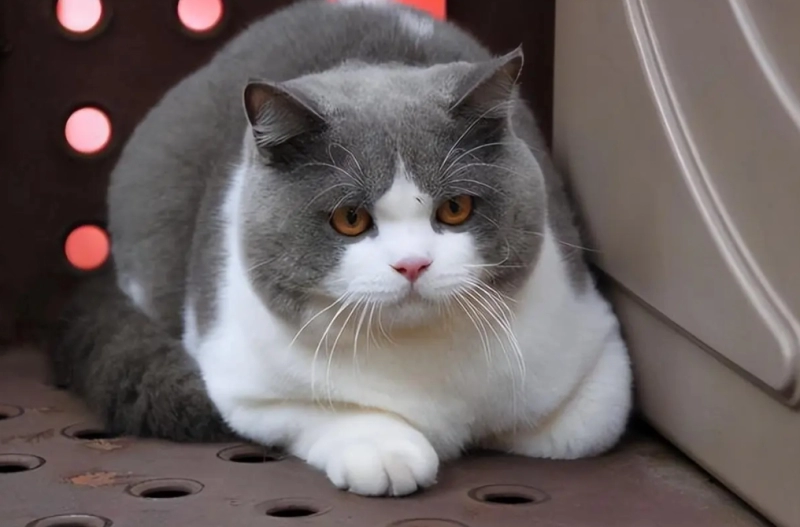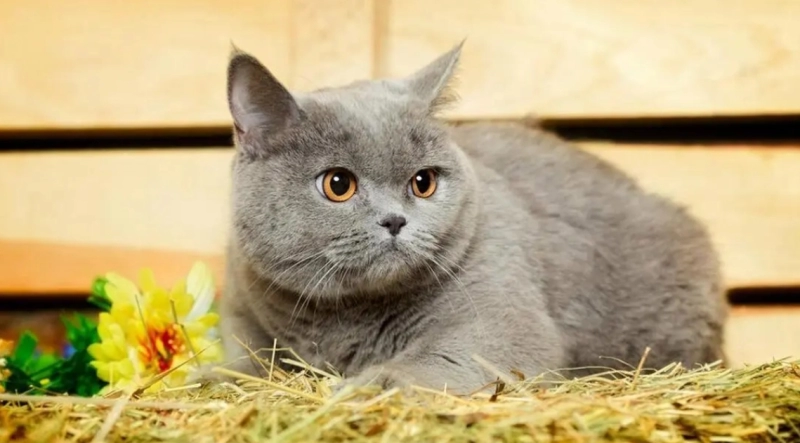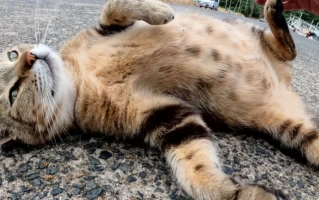As the founder of CatCareLab and a lifelong advocate for feline wellness, I’ve spent years observing the British Shorthair’s charm and quirks. With their teddy-bear faces and plush coats, these cats radiate an air of indestructibility. But let’s cut through the fluff: Are British Shorthairs really prone to illness? The answer isn’t black-and-white. While they’re often celebrated for their sturdy build and calm demeanor, this breed has vulnerabilities that demand attention. Through my work with veterinary experts and firsthand experience caring for over 50 British Shorthairs, I’ve uncovered truths that every owner must know—not to scare you, but to empower you. Let’s dive into the science, the myths, and the practical steps to keep your “British blue” thriving.

1. The British Shorthair’s Health Profile: Strengths and Weaknesses
Genetic Resilience vs. Breed-Specific Risks
The British Shorthair’s reputation for robustness isn’t unfounded. Descended from working cats in Roman Britain, they evolved to withstand harsh conditions. Modern studies by the Feline Genetics Research Group at UC Davis confirm their generally strong immune systems. However, selective breeding for specific traits (like that iconic rounded face) has introduced vulnerabilities:
Hypertrophic Cardiomyopathy (HCM): A 2023 study in the Journal of Feline Medicine found that 15% of British Shorthairs carry genetic markers for HCM, a heart disease causing thickened heart muscles. Early signs include lethargy and labored breathing.
Polycystic Kidney Disease (PKD): Linked to a dominant gene, PKD causes fluid-filled cysts in kidneys. Research from the Royal Veterinary College shows 10% prevalence in the breed.
Urinary Tract Issues: Their stocky build and sedentary tendencies increase risks of bladder stones and UTIs. A 2024 survey by Pet Health Network ranked British Shorthairs among the top 3 breeds for urinary problems.
My Take: Genetics load the gun, but environment pulls the trigger. Proactive screening (e.g., annual echocardiograms for HCM) can mitigate these risks.
2. The Obesity Epidemic: Why British Shorthairs Are “Couch Potatoes”

The Silent Crisis in Plush Coats
British Shorthairs have a knack for converting even the blandest kibble into body fat. A 2025 report by the Association for Pet Obesity Prevention revealed that 42% of British Shorthairs in the U.S. are overweight—higher than the feline average of 35%.
Why It Matters:
Extra weight strains joints, exacerbating arthritis (common in older British Shorthairs).
Obesity-linked diabetes cases have surged by 20% since 2020.
Action Plan:
Portion Control: Use a kitchen scale—not the “eyeball method.” Follow feeding guidelines from brands like Royal Canin.
Interactive Feeding: Puzzle feeders slow down eating and mimic hunting.
Exercise: Laser pointers and feather wands work wonders. Aim for 15-minute sessions twice daily.
Case Study: My client’s British Shorthair, Winston, dropped from 16 lbs to 12 lbs in 6 months using a tailored diet and a cat wheel. His arthritis pain vanished.
3. Respiratory and Digestive Quirks: Not Just “Snuffly Noses”

The Delicate Balance
Their adorable flat faces come at a cost. British Shorthairs are prone to:
Upper Respiratory Infections (URIs): Stress or seasonal changes can trigger sneezing fits. A 2024 Cornell Feline Health Center study linked their shorter nasal passages to higher URI susceptibility.
Food Sensitivities: Their sensitive stomachs often rebel against sudden diet changes. Gradual transitions (over 7-10 days) are crucial.
Pro Tips:
Use humidifiers during winter to ease breathing.
Probiotics like FortiFlora can stabilize digestion.
4. Immune System Gaps: Vaccination and Parasite Defense

Beyond the Kitten Shots
British Shorthairs aren’t immunocompromised, but their love for lounging indoors creates false security. Key risks:
Feline Infectious Peritonitis (FIP): While rare, coronavirus mutations (often stress-induced) can be fatal. A 2025 Tufts University trial found early antiviral treatment boosts survival rates to 80%.
Parasites: Their dense fur hides fleas easily. Monthly preventatives like Revolution Plus are non-negotiable.
Controversy Alert: Some breeders argue against over-vaccination. My stance? Core vaccines (panleukopenia, calicivirus) are lifesavers. Discuss non-core options (e.g., FeLV) with your vet.
5. The Mental Health Factor: Stress as a Silent Killer

When “Chill” Becomes Harmful
British Shorthairs mask stress brilliantly—until they don’t. Chronic anxiety weakens immunity, increasing disease risks. Red flags:
Overgrooming or hiding.
Sudden litter box aversion.
Solutions:
Vertical Spaces: Cat trees near windows reduce territorial stress.
Routine: Feed and play at consistent times.
Conclusion: A Lifelong Partnership
British Shorthairs aren’t fragile flowers, but they’re not invincible either. Their health hinges on preventive care, genetic awareness, and tailored lifestyles. As I tell my CatCareLab community: “Love isn’t just cuddles; it’s committing to their 9 lives.”
Your Next Steps:
Book a breed-specific health screening.
Audit your cat’s diet and activity levels.
Share this guide with fellow British Shorthair lovers—because knowledge is the best vaccine.








No comments yet, come on and post~